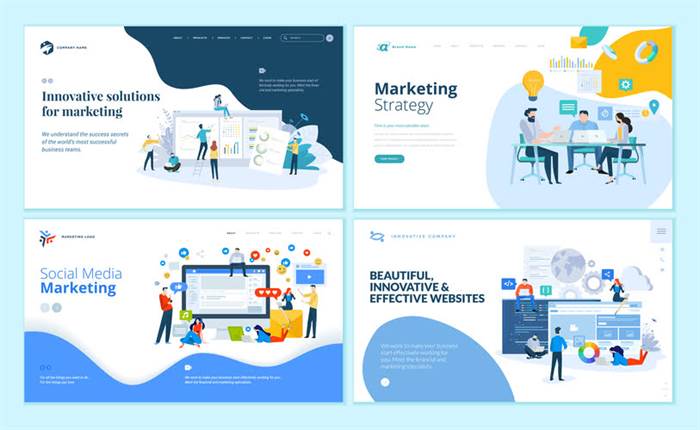Thanks to AI-powered predictive maintenance, manufacturers can improve efficiency while reducing the cost of machine failure. The manufacturing industry is rapidly evolving with the introduction of artificial intelligence (AI). AI has the potential to revolutionize the way manufacturing companies operate, from streamlining production processes to improving customer service.
This allows for more powerful technologies to be launched by the likes of Nvidia or Apple. With the latest wave of artificial intelligence interest hitting various companies, the 3 nm chip launch couldn’t have come at a better time. Blockchain and AI technologies are also helping companies accelerate the transition away from fossil fuels. Shell worked with Amex and Accenture to create a public blockchain-based chain of custody system that helps increase the availability and use of sustainable aviation fuel. For example, the automobile major BMW uses AI to inspect car parts for defects.
How Appinventiv is Empowering Manufacturing with Custom AI/ML Solutions
Any deviations from expected outcomes trigger immediate alerts, allowing timely interventions to maintain product quality and process efficiency. This real-time monitoring ensures consistent production and reduces the likelihood of defects. Autonomous robots and Automated Guided Vehicles (AGVs) powered by AI contribute to tasks like material handling, assembly, and even complex operations like welding and painting. These robots can work collaboratively with humans, increasing efficiency and reducing the risk of dangerous tasks. They enhance manufacturing processes by reducing human errors, improving consistency, and speeding up production.

The more people working on an assembly line, the more opportunities there are for errors to creep in. Therefore, automation and robotics are being introduced by many manufacturers to eliminate errors. But that takes AI to ensure that even the slightest deviation from standard practices and workflows is detected at once. Manufacturers should start applying generative AI or other technologies to targeted initiatives to learn, develop skills, and secure early wins that can be used to build organizational momentum and gain buy-in. “It’s about bringing knowledge into the organization about how to use and implement AI,” MIT Sloan professor John Hauser said at the MIMO Symposium. Through intellectual rigor and experiential learning, this full-time, two-year MBA program develops leaders who make a difference in the world.
Artificial Intelligence and Machine Learning
Predictive maintenance enabled by AI allows factories to boost productivity while lowering repair bills. Many more applications and benefits of AI in production are possible, including more accurate demand forecasting and less material waste. Artificial intelligence (AI) and manufacturing go hand in hand since humans and machines must collaborate closely in industrial manufacturing environments.
In the example of aerospace, an industry that’s experiencing a downturn, it may be that its manufacturing operations could adapt by making medical parts, as well. Despite the pervasive popular impression of industrial robots as autonomous and “smart,” most of them require a great deal of supervision. But they are getting smarter through AI innovation, which is making collaboration between humans and robots safer and more efficient. The realistic conception of AI in manufacturing looks more like a collection of applications for compact, discrete systems that manage specific manufacturing processes. They will operate more or less autonomously and respond to external events in increasingly intelligent and even humanlike ways—events ranging from a tool wearing out, a system outage, or a fire or natural disaster. The previous generation of automation solutions required significant efforts from humans during the deployment phase and was therefore difficult to scale.
A UK Exhibition Showcases Net-Zero Architecture—and the Industry’s Way Forward
Digital twins optimize design and operational flow in factories, warehouses, and distribution centers. Accelerated data science unlocks deeper insights for intelligent forecasting and decision-making. And Technician dispatch and vehicle routing can be dynamically optimized to improve efficiency. With the move to smaller technology nodes, the demand for compute cycles in electronic design automation (EDA) and semiconductor manufacturing is rapidly and exponentially increasing. Advanced chip manufacturing requires over 1,000 steps, producing features the size of a biomolecule.
- For Allison Horn, Accenture’s talent transformation lead, the company’s survey results provide a sigh of relief that her peers are also investing in the novel technology.
- By examining data from various sources, including utility meters and equipment sensors, AI may offer energy-saving tactics, resulting in lower operational costs and a smaller environmental impact.
- Think of, for instance, how only an experienced operator has been able to manipulate a machine into just the right shape.
- Utilizing machine vision technology, AI systems can spot deviations from the norm because the majority of flaws are readily apparent.
AI systems that use machine learning algorithms can detect buying patterns in human behavior and give insight to manufacturers. They store your data pretty cheaply, but when you start using computing resources, it becomes a lot more expensive. You want the ability to scale across different cloud providers or storage solutions, whichever is most cost effective. With any new technology rollout, it makes sense to start with a pilot such as piloting AI on one production line. You create an iteration, work through any issues that come up, and then extend the pilot to different machines or different lines.
Process Improvement
Although designs are idealized, manufacturing processes take place in the real world, so conditions might not be constant. An effective generative-design algorithm incorporates this level of understanding. Much of the power of AI comes from the ability of machine learning, neural networks, deep learning, and other self-organizing systems to learn from their own experience, without human intervention. These systems can rapidly discover significant patterns in volumes of data that would be beyond the capacity of human analysts.
Simplilearn is one of the world’s leading providers of online training for Digital Marketing, Cloud Computing, Project Management, Data Science, IT, Software Development, and many other emerging technologies. Factory worker safety is improved, and workplace dangers are avoided when abnormalities like poisonous gas emissions may be detected in real-time. In manufacturing, for instance, satisfying customers necessitates meeting their needs in various ways, including prompt and precise delivery.
Cost Reduction
For example, an automated anomaly detection tool could replace or augment human workers who are tasked with quality control. This means augmenting or, in some cases, replacing human inspectors with AI-enabled visual inspection. This increases accuracy and shortens the time for inspections, reducing recalls and rework and resulting in significant cost savings.

AI in manufacturing can provide a range of benefits to businesses, including increased efficiency, improved accuracy, and cost savings. Effectively using sensor data requires the development of effective AI models. Those models have to be trained to understand what they’re seeing in the data—what can cause those problems, how to detect the causes, and what to do. Today, machine-learning models can use sensor data to predict when a problem is going to occur and alert a human troubleshooter.
Generative Design
The advent of AI-powered manufacturing solutions and machine learning in manufacturing has transformed the way warehouses operate, leading to improved efficiency, accuracy, and cost savings. Supply chain management plays a crucial role in the manufacturing industry, and artificial intelligence has emerged as a game changer in this field. By harnessing the power of AI and ML in manufacturing, companies are revolutionizing their supply chain processes and achieving significant improvements in efficiency, accuracy, and cost-effectiveness.
Building the Future Workforce on Manufacturing Day, Oct. 6
On the one hand, they waste money and resources if they perform machine maintenance too early. Manufacturers typically direct cobots to work on tasks that require heavy lifting or on factory assembly lines. For example, cobots working in automotive factories can lift heavy car parts and hold them in place while human workers secure them. Network experts can help de-risk your company’s adoption of AI and other advanced technologies via hands-on technical assistance, as well as connecting you with grants, awards and other funding sources.
Compressor manufacturer and oil and gas solutions provider Baker Hughes is harnessing AI to identify maintenance issues. Artificial Intelligence (AI), particularly generative AI, is set to further accelerate the transformation of the manufacturing and industrial sector. With its ability to leverage vast amounts of data and predict outcomes, AI can significantly improve decision-making processes, optimize production lines, enhance product quality, and reduce waste. A digital twin is a virtual replica what is AI in manufacturing of a physical asset that captures real-time data and simulates its behavior in a virtual environment. By connecting the digital twin with sensor data from the actual equipment, AI in manufacturing can analyze patterns, identify anomalies, and predict potential failures. By using NVIDIA technologies, farmers can analyze data from diverse sources—such as soil moisture sensors, weather forecasts, and satellite imagery—to make better decisions about crop management, irrigation, and pest control.

